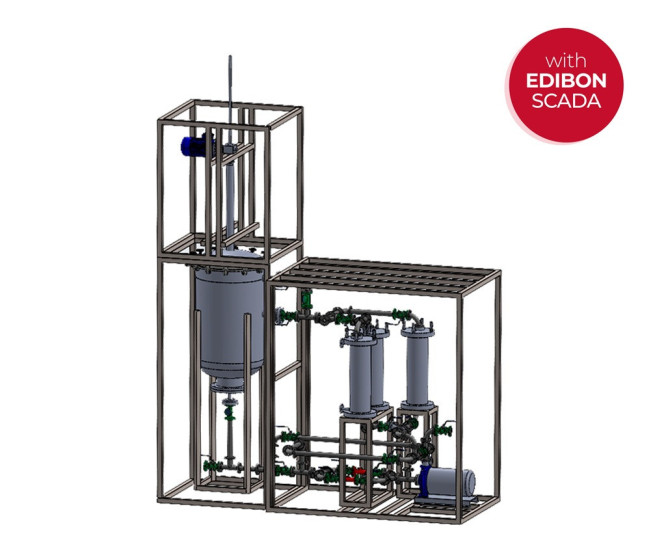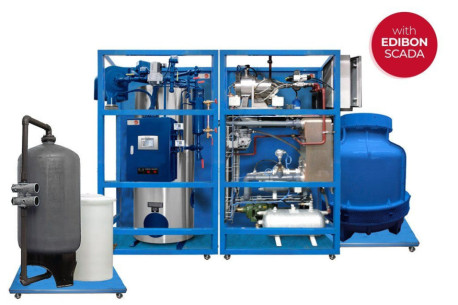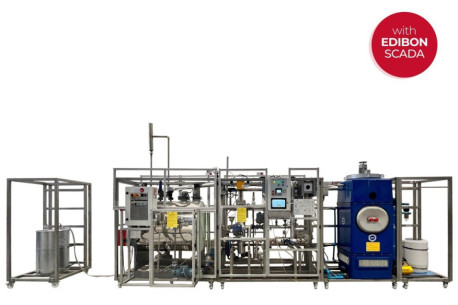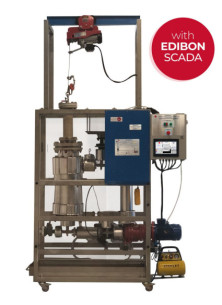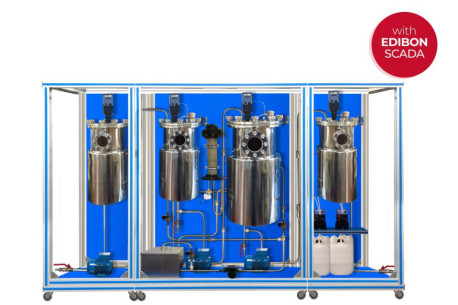The Computer Controlled and Touch Screen 250 l Anti-Corrosive Circulation Reactor, "ACCR/250/CTS", is able to show, for further research and study, the fractionation of biomass into its three components of interest: high quality cellulose, hemicellulose and lignin, through the use of an organic solvent, called Gamma-Valerolactone (GVL). In addition, the unit has the main elements made of PTFE/PFA and coated with ECTFE (Halar) or Niflon, which allows the study of highly corrosive processes.
The unit is made up of a digester reactor with a piston, a magnetic drive pump for the recirculation of the fluid, filters to ensure the correct operation of the pump and two heat exchangers to reach the process temperatures.
The biomass and the reaction fluid are introduced into the reactor. As the biomass is porous and solid, a good mixing of the feed is not achieved on its own, and as it is not possible to use a mixer in the reactor because the feed is solid and highly corrosive, the action of the pump is used to agitate the liquid reaction medium by recirculation.
To achieve the process conditions, two graphite heat exchangers are used and the temperature and pressure in the circuit are measured. By using a vacuum pump, the gas bubbles retained in the pores of the wood are removed and a higher efficiency of the reaction is achieved. The cooling system, consisting of the same graphite heat exchangers, allows the process to be brought to ambient conditions.
To press the solid component, a piston is used which, driven by a screw jack, presses the biomass, thus reducing the amount of liquid retained, so that the drying process is quicker and more efficient.
After pressing, the liquid and solid components are discharged. Finally, the unit is washed with countercurrent water, using the magnetic drive pump.
This Computer Controlled Unit is supplied with the EDIBON Computer Control System (SCADA), and includes: The unit itself + Computer Control, Data Acquisition and Data Management Software Packages, for controlling the process and all parameters involved in the process.
 クッキーの設定
クッキーの設定

